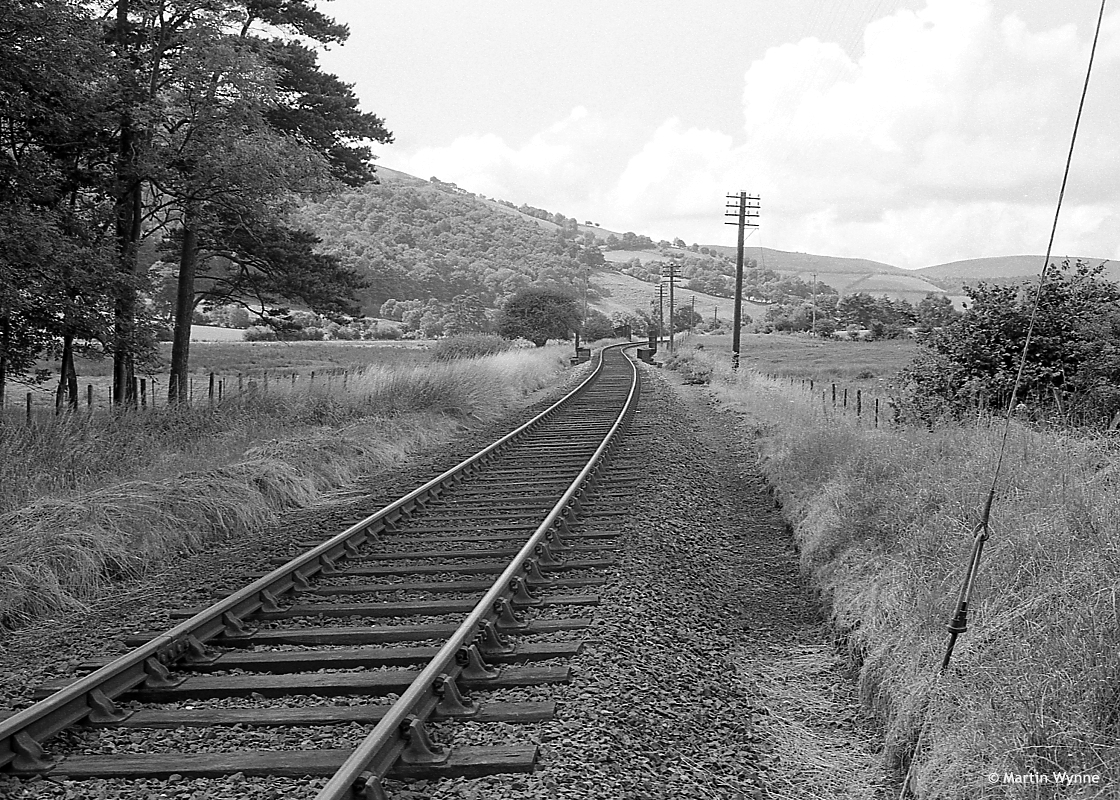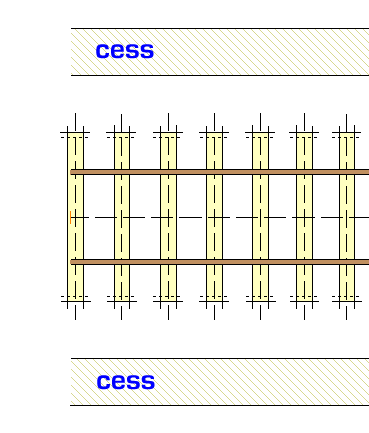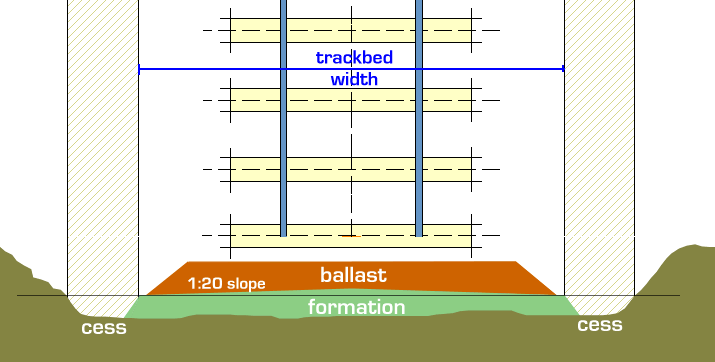Martin Wynne
Admin
- Location
- West of the Severn UK
- Info
.
Sleepers are 5" thick and pointwork timbers are 6" thick, and for a running line you need at least 6" of ballast below them, so on plain track in open country you are likely to see a ballast shoulder at least 12" deep from the sleeper tops, sometimes a lot more:




That's from the ballast top to the underlying formation. The cess is then beyond that, and in cuttings it might be quite deep for drainage.
You can add trackbed edges and/or cess marks to the Templot templates to assist in cutting the trackbed material. Click the real > trackbed edges... menu item:

The TS and MS sides of the template are controlled independently. On the dialog select the required TS or MS tab, and then tick the add option box. The full controls will then appear. Click the info button for an explanation of them.
The printed result looks like this:


Within stations and junctions, there is frequently no obvious ballast shoulder between the tracks. Yards and sidings don't need much depth of ballast below them, so often there isn't much visible shoulder there either.
But a trackbed also allows you to replicate a very common, but seldom modelled feature. Sidings and yards alongside running lines are often at a lower level than the running line. This makes gravity a safety feature in addition to the trap points. Here you can see a ballast shoulder about 12" deep from the running line down to the siding. But with no obvious shoulder between the siding and the open yard. It's likely that the underlying formation is flat across the whole site. The running line gets a good depth of ballast below it, but the siding got very little, or none:

Generally if you use a thick trackbed you can build the ground up where a deep shoulder isn't needed, but with a thin trackbed on a solid baseboard it's difficult to model track convincingly, especially in open country.
Here soft Sundeala fibreboard is being used as the trackbed, with chamfered cork underlay to represent the ballast shoulder:

More info in this topic: https://85a.uk/templot/club/index.php?threads/what-thickness-of-trackbed-do-you-use.314/
cheers,
Martin.
Sleepers are 5" thick and pointwork timbers are 6" thick, and for a running line you need at least 6" of ballast below them, so on plain track in open country you are likely to see a ballast shoulder at least 12" deep from the sleeper tops, sometimes a lot more:


That's from the ballast top to the underlying formation. The cess is then beyond that, and in cuttings it might be quite deep for drainage.
You can add trackbed edges and/or cess marks to the Templot templates to assist in cutting the trackbed material. Click the real > trackbed edges... menu item:
The TS and MS sides of the template are controlled independently. On the dialog select the required TS or MS tab, and then tick the add option box. The full controls will then appear. Click the info button for an explanation of them.
The printed result looks like this:


Within stations and junctions, there is frequently no obvious ballast shoulder between the tracks. Yards and sidings don't need much depth of ballast below them, so often there isn't much visible shoulder there either.
But a trackbed also allows you to replicate a very common, but seldom modelled feature. Sidings and yards alongside running lines are often at a lower level than the running line. This makes gravity a safety feature in addition to the trap points. Here you can see a ballast shoulder about 12" deep from the running line down to the siding. But with no obvious shoulder between the siding and the open yard. It's likely that the underlying formation is flat across the whole site. The running line gets a good depth of ballast below it, but the siding got very little, or none:
Generally if you use a thick trackbed you can build the ground up where a deep shoulder isn't needed, but with a thin trackbed on a solid baseboard it's difficult to model track convincingly, especially in open country.
Here soft Sundeala fibreboard is being used as the trackbed, with chamfered cork underlay to represent the ballast shoulder:
More info in this topic: https://85a.uk/templot/club/index.php?threads/what-thickness-of-trackbed-do-you-use.314/
cheers,
Martin.
message ref: 5167
 Search
Search
